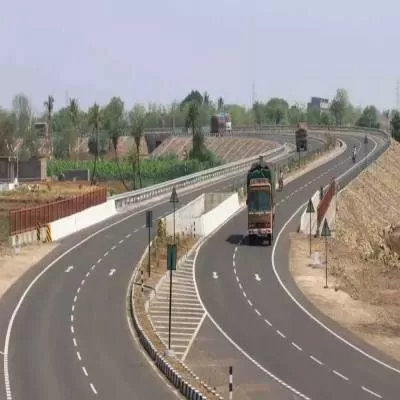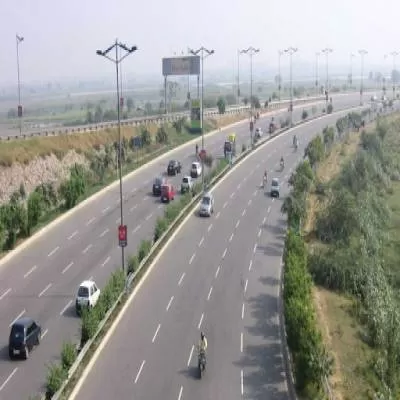- Home
- Infrastructure Transport
- ROADS & HIGHWAYS
- March forward?
March forward?
The PMO’s emissary Pulok Chatterjee has managed to get CIL to sign Fuel Supply Agreements (FSAs) with power companies. The FSAs will be signed for full quantity of coal mentioned in letters of assurance for 20 years. Coal India will be penalised if the supply is below 80 per cent. On the other hand, it will get incentives for achieving 90 per cent of supply. This step will benefit power plants with an estimated capacity of over 50,000 MW. In the immediate term, this will release the embargo the banks have laid on further funding of power plants, thereby easing liquidity.
The NHAI is likely to cross the award of over 6,000 km this fiscal against its target of 7,300 km owing to technicalities and will continue its process of taking up award of a further 7,300 km in the forthcoming fiscal, which will keep up the momentum in the roads sector. Further, we are likely to see consolidation, as aggressive bidding has resulted in bleeding bottom lines.
The equipment sector continues with a spring in its step, undeterred. It is expected to witness a CAGR of 20 per cent in FY 2011-2015. Off-Highway Research is very bullish about the long-term prospects of the construction equipment market, and forecasts a robust growth of 18 per cent in 2011, with sales reaching 69,960 units. This is likely to be followed by a growth of 16 per cent in 2012, and thereafter between 9 per cent and 12 per cent annually to reach 109,315 units by the end of 2015.
Schemes introduced to assist skill development in the country have not brought any change at the ground level. The primary reason, according to analysts, is the temporary and ineffective nature of the financing pattern being used in such schemes and the limited participation of the corporate sector in skill development initiatives. To overcome this, the Planning Commission has suggested a levy on the private sector as done in countries like Germany and Brazil, which could act as a regular source of funding for skill development initiatives. The labour crunch that hit contractors badly in 2011 seems to have levelled out. Part of it may have been owing to the slowdown and lax demand but there also seems to be disenchantment with the Mahatma Gandhi National Rural Employment Guarantee Scheme (MNREGS) itself, as it has seen money released for the scheme fall from Rs 35,242 crore last year to Rs 21,441 crore this year, while expenditure has gone down from Rs 39,000 crore last year to Rs 20,000 crore as of January-end.
All that has been mentioned above augurs well for the sector. Most important, though, is the Union Budget that lies before us. The Finance Minister has a golden opportunity to fast-forward growth and leapfrog over the gaps caused by the policy paralysis last year. If so, the Ides of March will be known henceforth as the onward march!
The green shoots of business confidence, stated in this column last month, have been aided by a surge in FII investment of up to $5 billion, which has seen the Sensex surge by over 15 per cent in 2012 until the third week of February. Recently, a mechanism to enable access to the Indian debt market through infrastructure debt funds has been evolved, which will be regulated entities with a sustained long-term interest rate, long-horizon entities like pension, infrastructure and insurance funds. The extent of foreign participation both through debt and equity in the financing of India's infrastructure has been of the order of around 8-10 per cent in the recent past; and now, from January 1, 2012, India has allowed qualified foreign investors to invest in Indian equity. Under this major initiative, they can buy stocks of Indian companies. Many infra stocks appreciated in the rally; for instance, the realty sector gained over 45 per cent and power over 25 per cent. However, results indicate debt stress on profits. But the gloom seems to be lifting and some initiatives are bearing fruit.The PMO’s emissary Pulok Chatterjee has managed to get CIL to sign Fuel Supply Agreements (FSAs) with power companies. The FSAs will be signed for full quantity of coal mentioned in letters of assurance for 20 years. Coal India will be penalised if the supply is below 80 per cent. On the other hand, it will get incentives for achieving 90 per cent of supply. This step will benefit power plants with an estimated capacity of over 50,000 MW. In the immediate term, this will release the embargo the banks have laid on further funding of power plants, thereby easing liquidity.The NHAI is likely to cross the award of over 6,000 km this fiscal against its target of 7,300 km owing to technicalities and will continue its process of taking up award of a further 7,300 km in the forthcoming fiscal, which will keep up the momentum in the roads sector. Further, we are likely to see consolidation, as aggressive bidding has resulted in bleeding bottom lines.The equipment sector continues with a spring in its step, undeterred. It is expected to witness a CAGR of 20 per cent in FY 2011-2015. Off-Highway Research is very bullish about the long-term prospects of the construction equipment market, and forecasts a robust growth of 18 per cent in 2011, with sales reaching 69,960 units. This is likely to be followed by a growth of 16 per cent in 2012, and thereafter between 9 per cent and 12 per cent annually to reach 109,315 units by the end of 2015.Schemes introduced to assist skill development in the country have not brought any change at the ground level. The primary reason, according to analysts, is the temporary and ineffective nature of the financing pattern being used in such schemes and the limited participation of the corporate sector in skill development initiatives. To overcome this, the Planning Commission has suggested a levy on the private sector as done in countries like Germany and Brazil, which could act as a regular source of funding for skill development initiatives. The labour crunch that hit contractors badly in 2011 seems to have levelled out. Part of it may have been owing to the slowdown and lax demand but there also seems to be disenchantment with the Mahatma Gandhi National Rural Employment Guarantee Scheme (MNREGS) itself, as it has seen money released for the scheme fall from Rs 35,242 crore last year to Rs 21,441 crore this year, while expenditure has gone down from Rs 39,000 crore last year to Rs 20,000 crore as of January-end.All that has been mentioned above augurs well for the sector. Most important, though, is the Union Budget that lies before us. The Finance Minister has a golden opportunity to fast-forward growth and leapfrog over the gaps caused by the policy paralysis last year. If so, the Ides of March will be known henceforth as the onward march!




















